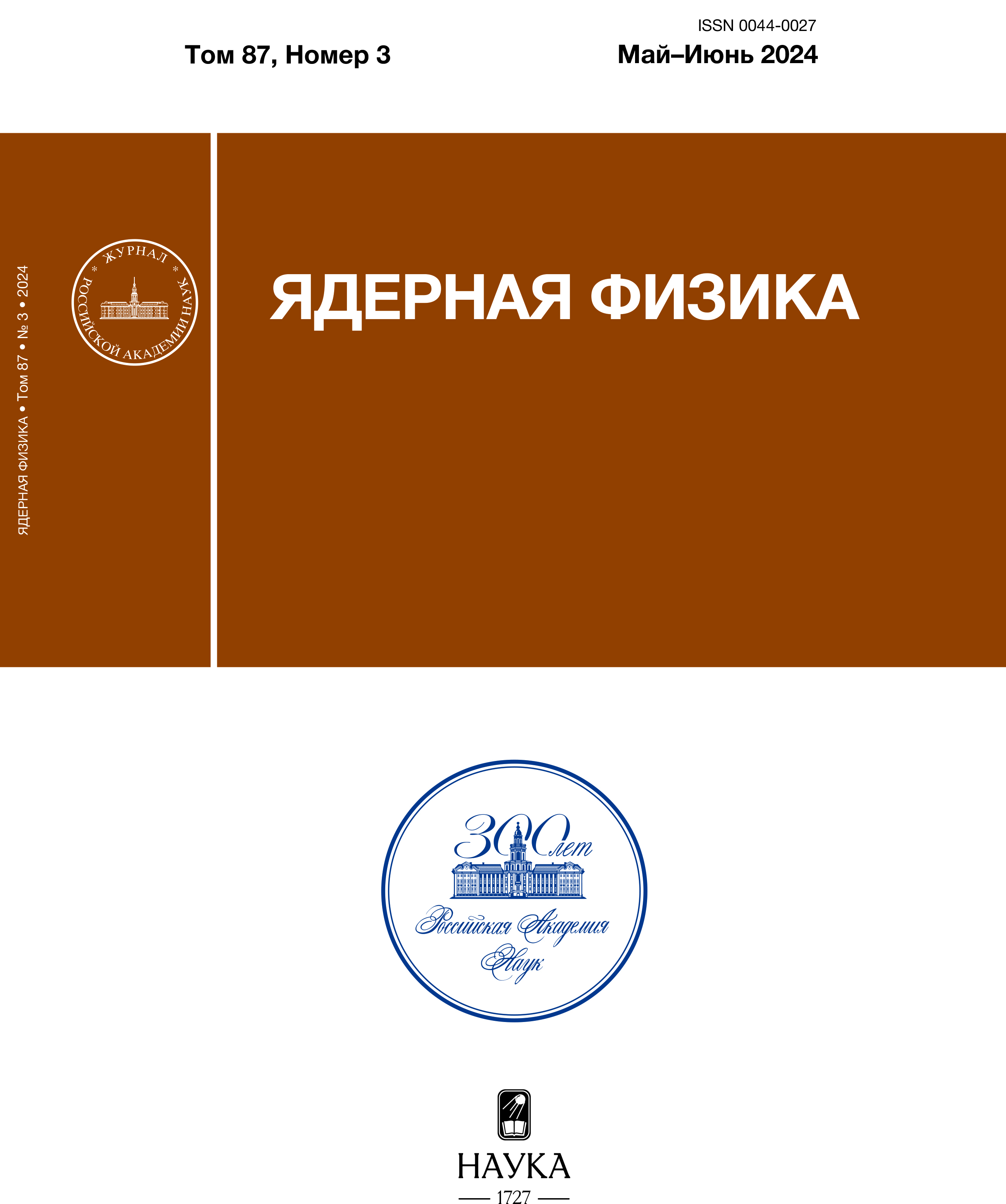SPIN DISTRIBUTION OF DOUBLE NUCLEAR FISSION WITH ACCOUNT FOR BENDING- AND WRIGGLING- MODES
- Autores: Kadmensky S.G.1, Lyubashevsky D.E.1, Stepanov D.A.1, Pisklyukov A.A.1
-
Afiliações:
- Voronezh State University
- Edição: Volume 87, Nº 3 (2024)
- Páginas: 288-294
- Seção: МАТЕРИАЛЫ 73-Й МЕЖДУНАРОДНОЙ КОНФЕРЕНЦИИ ПО ЯДЕРНОЙ ФИЗИКЕ. Ядра. Теория
- ##submission.datePublished##: 15.06.2024
- URL: https://ruspoj.com/0044-0027/article/view/674737
- DOI: https://doi.org/10.31857/S0044002724030182
- EDN: https://elibrary.ru/IVOFUK
- ID: 674737
Citar
Texto integral
Resumo
A theoretical description of the nature of the spin distribution (CP) of fragments of low-energy induced and spontaneous double fission of nuclei is carried out. For two deformed fission prefragments, a mechanism for pumping large values of their relative orbital momenta L and spins J, due to the combined influence of bending and wriggling vibrations, has been established, and analytical formulas for describing CP within the framework of such a mechanism have been obtained for the first time. It is emphasized that for this mechanism, the nucleus remains “cold” in the fission process, while in the statistical model it heats up to temperatures 1 MeV. A comparison of the calculated CP for forced double fission of actinide nuclei and with the available experimental data showed reasonable agreement both in terms of the magnitude of the average spin values and in the sawtooth shape of the dependence of CP on the atomic number of fragments, which confirms the reliability of the pumping mechanism of large spin values of deformed fission fragments. For spontaneous double fission of the nucleus , possible reasons for the discrepancy between the theoretical CP and the experiment are indicated.
Sobre autores
S. Kadmensky
Voronezh State University
Email: kadmensky@phys.vsu.ru
Voronezh, Russia
D. Lyubashevsky
Voronezh State UniversityVoronezh, Russia
D. Stepanov
Voronezh State UniversityVoronezh, Russia
A. Pisklyukov
Voronezh State UniversityVoronezh, Russia
Bibliografia
- С. Г. Кадменский, ЯФ 65, 1424, 1833 (2002) [Phys. At. Nucl. 65, 1390, 1785 (2002)].
- С. Г. Кадменский, Л. В. Родионова, ЯФ 66, 1259 (2003) [Phys. At. Nucl. 66, 1219 (2003)].
- С. Г. Кадменский, ЯФ 68, 2030 (2005) [Phys. At. Nucl. 68, 1968 (2005)].
- С. Г. Кадменский, ЯФ 71, 1220 (2008) [Phys. At. Nucl. 71, 1193 (2008)].
- A. Bohr and B. Mottelson, Nuclear Structure (New York, Amsterdam, 1969, 1975), Vol. 1, 2.
- В. Е. Бунаков, С. Г.Кадменский, Изв. РАН. Сер. физ. 71, 360 (2007) [Bull. Russ. Acad. Sci.: Phys. 71, 346 (2007)].
- P. Carruthers and M. M. Nieto, Rev. Mod. Phys. 40, 411 (1968).
- J. R. Nix and W. J. Swiateсki, Nucl. Phys. A 71,1(1965).
- L. G. Moretto and R. P. Schmitt, Phys. Rev. C 21, 204 (1980).
- P. Fong, Statistical Theory of Nuclear Fission (Gordon and Beach, New York, 1969).
- С. Г. Кадменский, В. Е. Бунаков, Д. Е. Любашевский, ЯФ 80, 447 (2017) [Phys. At. Nucl. 80, 850 (2017)].
- J. Randrup, T. Døssing, and R. Vogt, Phys. Rev. C 106, 014609 (2022).
- R. Vogt and J. Randrup, Phys. Rev. C 103, 014610 (2021).
- J. Randrup and R. Vogt, Phys. Rev. Lett. 127, 062502 (2021).
- А. Б. Мигдал, ЖЭТФ 37, 249 (1959).
- T. M. Shneidman, G. G. Adamian, N. V. Antonenko, S. P. Ivanova, R. V. Jolos, and W. Scheid, Phys. Rev. C 65, 064302 (2002).
- J. Wilson et al., Nature 590, 566 (2021).
- Г. Н. Ловчиков, Б. П. Максютенко, С. П. Симаков, А. М. Труфанов, Препринт ФЭИ-1458 (Обнинск, 1983).
Arquivos suplementares










